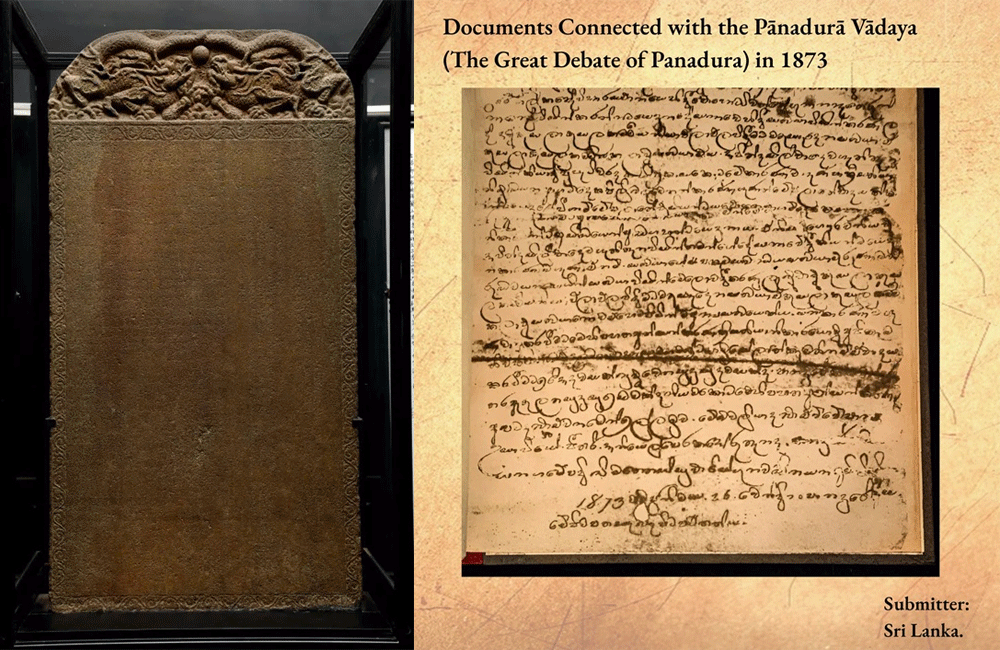Several documents linked to Sri Lanka have been inscribed on UNESCO’s Memory of the World Register.
The register consists of documentary collections including books, manuscripts, maps, photographs, sound or video recordings, which bear witness to the shared heritage of humanity.
Collections are added to the register by decision of UNESCO’s Executive Board, following the evaluation of nominations by an independent international advisory committee.
According to UNESCO, the following documents have been added to its Memory of the World Register.
Trilingual Inscription (TribhashaSellipiya)
Submitters: China and Sri Lanka.
The Trilingual Inscription is a stone tablet with Chinese, Persian and Tamil inscriptions, praising Buddha, God Vishnu and Allah. Discovered in 1911 in Sri Lanka by a British engineer, it is now preserved in the Colombo National Museum, with a replica exhibited in the Galle National Museum. Dated 15th February 1409, the tablet was installed by the Chinese Admiral Zheng He. Originally inscribed in the Treasure Boat Shipyard Park in Nanjingin, it was brought to Sri Lanka during his third voyage. The text mentions offerings made to a sacred mountain shrine. This is the only trilingual inscription having texts in Chinese, Tamil and Persian, which represent three different regions and cultures.
Documents Connected with the Pānadurā Vādaya (The Great Debate of Panadura) in 1873
Submitter: Sri Lanka.
The four documents, kept at the Rankot Viharaya Buddhist temple in Panadura, hold immense historical, cultural, spiritual, and intellectual value. Created against the backdrop of religious discord between Buddhists and Christians in the mid-19th century, they consist of correspondence between the Christian and Buddhist leaders advocating for an open dialogue on doctrinal issues, as well as a transcription of the entire dialogue. This transcription spans 27 and a half pages of handwritten text on paper using ink. The event fostered reconciliation and mutual respect between the two religious communities. The English translations, later made available in Europe and the US, had a significant impact on religious activists and scholars in those countries, contributing to the recognition of Buddhism as an advanced religion.

Leave your comments
Login to post a comment
Post comment as a guest